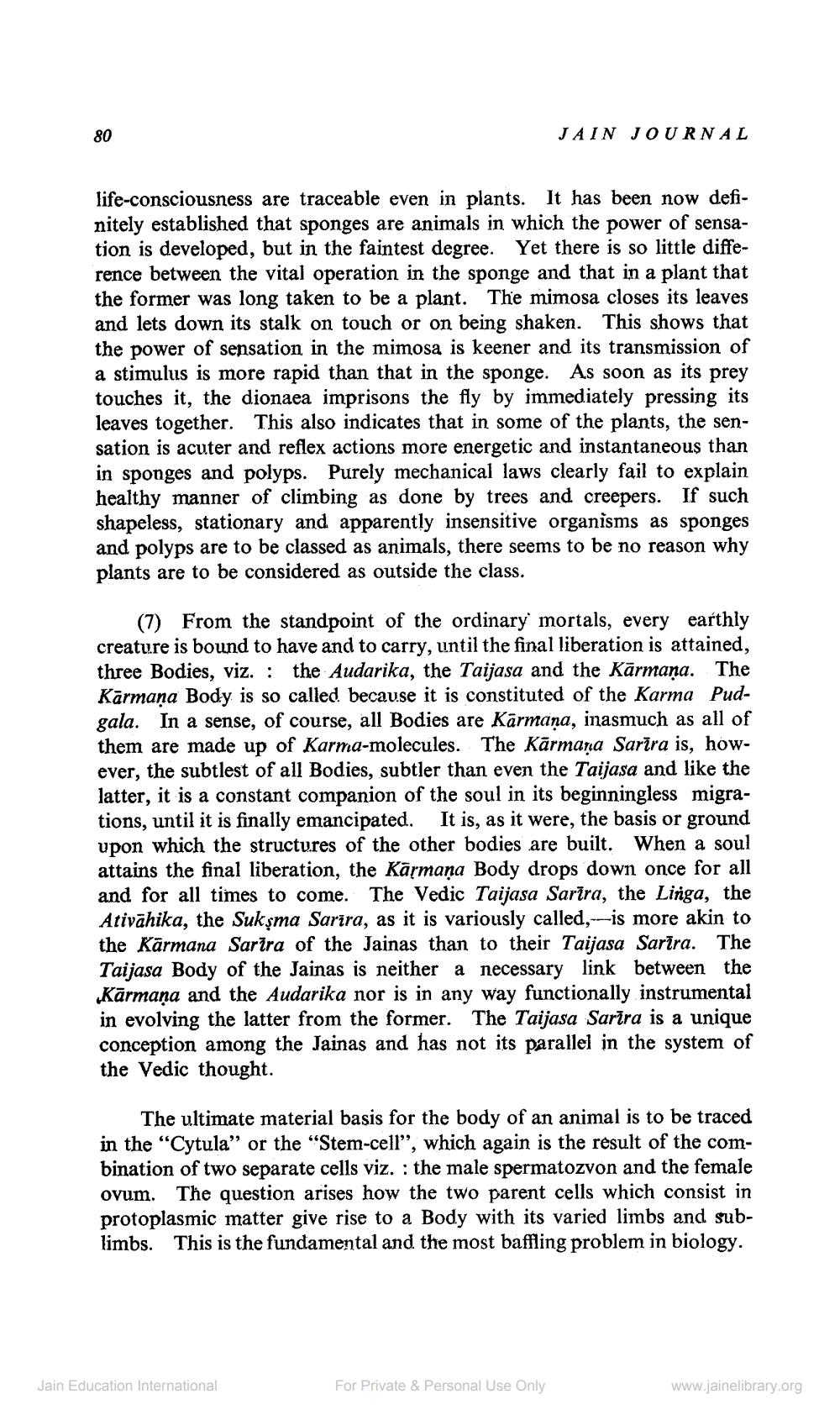________________
80
life-consciousness are traceable even in plants. It has been now definitely established that sponges are animals in which the power of sensation is developed, but in the faintest degree. Yet there is so little difference between the vital operation in the sponge and that in a plant that the former was long taken to be a plant. The mimosa closes its leaves and lets down its stalk on touch or on being shaken. This shows that the power of sensation in the mimosa is keener and its transmission of a stimulus is more rapid than that in the sponge. As soon as its prey touches it, the dionaea imprisons the fly by immediately pressing its leaves together. This also indicates that in some of the plants, the sensation is acuter and reflex actions more energetic and instantaneous than in sponges and polyps. Purely mechanical laws clearly fail to explain healthy manner of climbing as done by trees and creepers. If such shapeless, stationary and apparently insensitive organisms as sponges and polyps are to be classed as animals, there seems to be no reason why plants are to be considered as outside the class.
JAIN JOURNAL
(7) From the standpoint of the ordinary mortals, every earthly creature is bound to have and to carry, until the final liberation is attained, three Bodies, viz. : the Audarika, the Taijasa and the Karmana. The Karmana Body is so called because it is constituted of the Karma Pudgala. In a sense, of course, all Bodies are Karmana, inasmuch as all of them are made up of Karma-molecules. The Karmana Sarira is, however, the subtlest of all Bodies, subtler than even the Taijasa and like the latter, it is a constant companion of the soul in its beginningless migrations, until it is finally emancipated. It is, as it were, the basis or ground upon which the structures of the other bodies are built. When a soul attains the final liberation, the Kāṛmaṇa Body drops down once for all and for all times to come. The Vedic Taijasa Sarira, the Linga, the Ativähika, the Sukṣma Sarira, as it is variously called,--is more akin to the Karmana Sarira of the Jainas than to their Taijasa Sarira. The Taijasa Body of the Jainas is neither a necessary link between the Karmana and the Audarika nor is in any way functionally instrumental in evolving the latter from the former. The Taijasa Sarīra is a unique conception among the Jainas and has not its parallel in the system of the Vedic thought.
The ultimate material basis for the body of an animal is to be traced in the "Cytula" or the "Stem-cell", which again is the result of the combination of two separate cells viz. : the male spermatozvon and the female ovum. The question arises how the two parent cells which consist in protoplasmic matter give rise to a Body with its varied limbs and sublimbs. This is the fundamental and the most baffling problem in biology.
Jain Education International
For Private & Personal Use Only
www.jainelibrary.org




